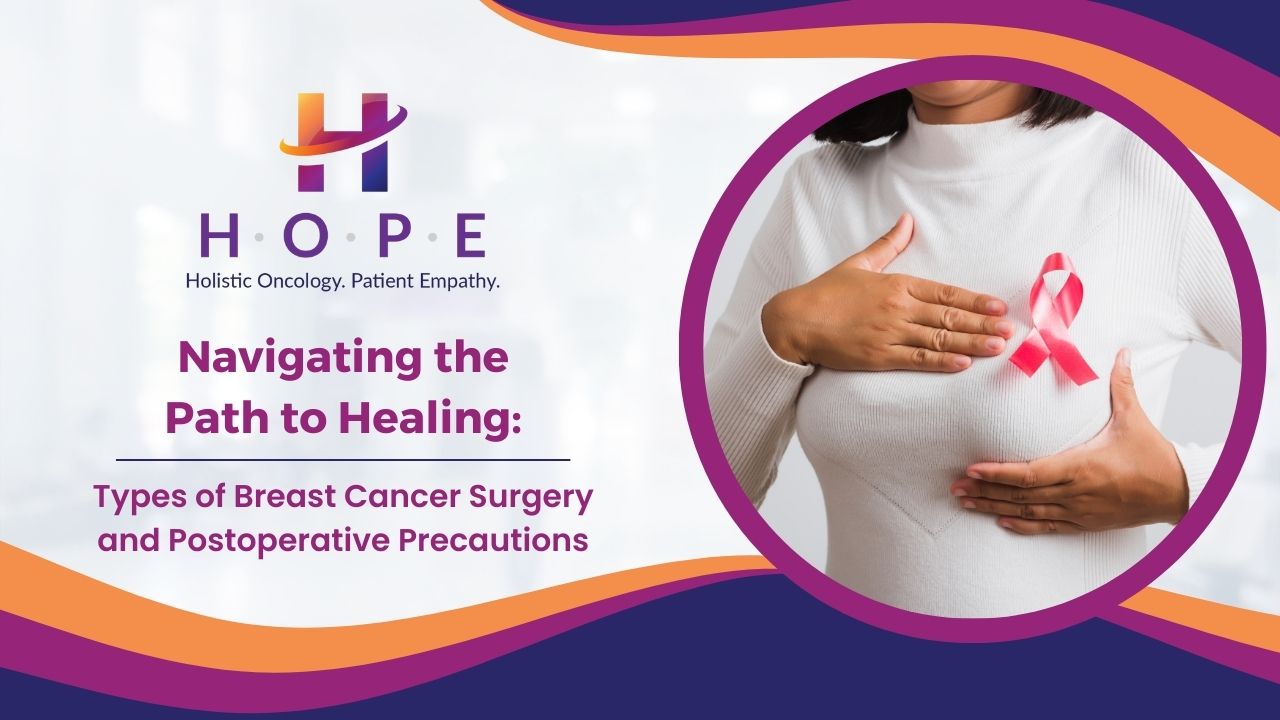Navigating the Path to Healing: Types of Breast Cancer Surgery and Postoperative Precautions
Introduction:
A breast cancer diagnosis often leads to a journey that includes various treatment options, with surgery playing a crucial role in many cases. The type of breast cancer surgery chosen depends on factors such as the stage of cancer, the size of the tumor, and the individual’s overall health. This article explores the different types of breast cancer surgery and outlines essential precautions for a smooth recovery post-surgery.
I. Types of Breast Cancer Surgery:
Lumpectomy:
Also known as breast-conserving surgery, a lumpectomy involves removing the tumor along with a small margin of surrounding healthy tissue. This option is often chosen for early-stage breast cancer, preserving much of the breast tissue.
Mastectomy:
Mastectomy involves the removal of the entire breast. There are several types of mastectomy, including:
Total or Simple Mastectomy: Removal of the entire breast.
Modified Radical Mastectomy: Removal of the breast tissue, some lymph nodes, and the lining over the chest muscles.
Radical Mastectomy: Removal of the breast tissue, chest muscles, and all the lymph nodes under the arm.
Sentinel Node Biopsy:
In this procedure, the surgeon removes a few lymph nodes, known as sentinel nodes, to determine if cancer has spread beyond the breast. If the sentinel nodes are cancer-free, it’s less likely that the cancer has spread to other lymph nodes.
Axillary Lymph Node Dissection:
This surgery involves removing a larger number of lymph nodes from the armpit area. It may be performed if cancer has spread to the sentinel nodes or if there is a high risk of spread.
II. Precautions After Breast Cancer Surgery:
Follow Medical Recommendations:
Adhering to the postoperative care plan outlined by the medical team is crucial. This may include prescribed medications, wound care instructions, and guidelines for physical activity.
Monitor Surgical Site:
Keep a close eye on the surgical site for any signs of infection, such as redness, swelling, or discharge. Report any unusual symptoms to the healthcare provider promptly.
Manage Pain Effectively:
Pain management is an integral part of the recovery process. Take prescribed pain medications as directed and communicate with the medical team if adjustments are needed.
Gradual Resumption of Activities:
While rest is essential, incorporating light activities such as walking into the daily routine can promote circulation and aid in the healing process. However, avoid strenuous activities until cleared by the healthcare provider.
Arm and Shoulder Exercises:
For individuals who underwent surgeries involving lymph nodes, gentle arm and shoulder exercises help prevent stiffness and improve range of motion. Physical therapy may be recommended.
Compression Garments:
In some cases, wearing compression garments or sleeves may be advised to manage swelling, especially if lymph nodes were removed.
Emotional Support:
Emotional well-being is a critical aspect of recovery. Seek support from friends, family, or support groups. Emotional support can significantly contribute to a positive recovery experience.
Maintain a Healthy Diet:
A nutritious diet is essential for healing. Ensure a balanced intake of vitamins, minerals, and protein to support the body’s recovery process.
Regular Follow-up Appointments:
Attend scheduled follow-up appointments with the healthcare provider. These appointments are vital for monitoring recovery progress, addressing concerns, and discussing any necessary adjustments to the treatment plan.
Breast Reconstruction Consideration:
If a mastectomy was performed, individuals may consider breast reconstruction options. Discuss these choices with the medical team to make informed decisions about reconstructive surgery.
Conclusion:
Breast cancer surgery is a significant step in the journey towards recovery, and taking proper precautions post-surgery is essential for a smooth and successful healing process. By closely following medical recommendations, monitoring the surgical site, and adopting a holistic approach to recovery, individuals can enhance their overall well-being and regain a sense of normalcy in their lives. With the support of healthcare professionals, loved ones, and a commitment to self-care, those who have undergone breast cancer surgery can navigate the path to healing with resilience and optimism.

